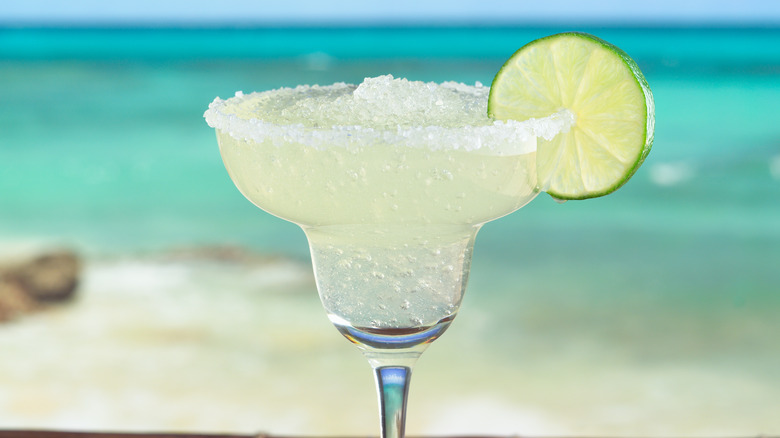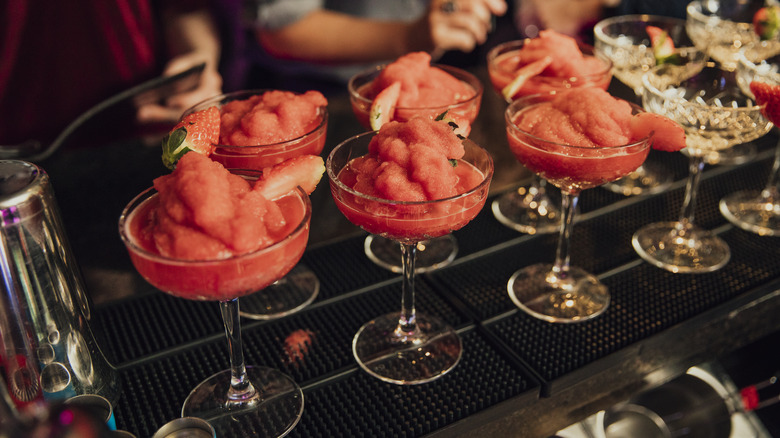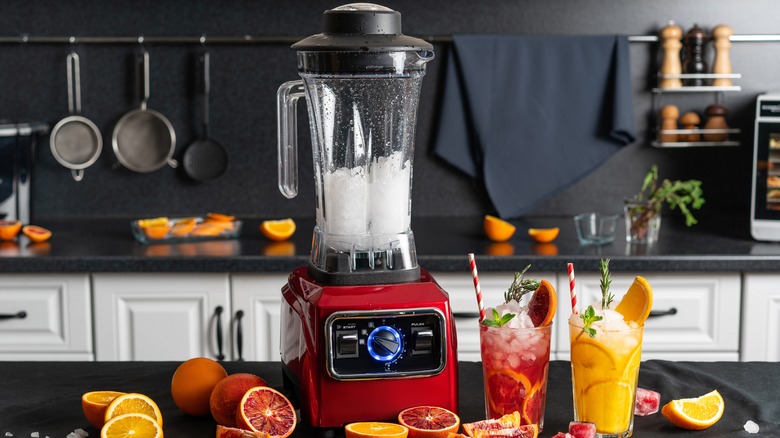Why Your Blender Isn't Cutting It When It Comes To Frozen Cocktails
Many of your favorite things to order at a restaurant just aren't the same when you try to replicate them at home. A good pub burger. Your favorite kind of latte. And yes, even frozen cocktails can fall short. While making frozen margaritas at home doesn't sound that complicated, chances are you just can't put your finger on what's so different. The answer may lie with your blender.
Frozen cocktails can be quite fickle, especially if you aren't using the right components. First and foremost, you want to make sure you're handling the ice correctly: It's recommended to use crushed ice instead of cubed. After that, it gets even more nuanced. Even though you're throwing ice in a blender, using the blending technique can be complicated. Your drink may come out cold, but there is no guarantee that the consistency will amount to the refreshing chiller of your dreams. Timing is everything, and if you want a drink that isn't a watery mess, you're going to need some creative solutions.
Other frozen cocktail methods
One of the newest trends in cocktail culture is forgoing water, for the most part. This is an attempt by many establishments to make the industry more sustainable and get rid of water waste. Bars have gotten into the practice of prediluting cocktails, which reduces the need to shake or stir drinks with ice. Using this strategy benefits frozen cocktails as well. Drink scientist Dave Arnold told Liquor.com that he prefers to store prediluted ingredients in the freezer in Ziploc bags. Once frozen, you can remove the bag and shake the solids to make the frozen consistency. Prediluted drinks are starting to become more and more prevalent in the industry. In addition to reducing waste, it allows bartenders to have more time with their customers, which no doubt increases the potential for tips.
"Prediluting controls the exact amount of water being used to dilute the cocktail," Brooke Toscano, who managed craft cocktail bar Pouring Ribbons in New York, explained to Liquor.com. "In most cases, the cocktail is stirred or shaken with ice to reach optimal dilution and temperature, then the ice is tossed aside, letting a lot of water literally go down the drain." For those who don't want to buy an industrial slushy machine, this technique is a welcome alternative. Professional-grade machines can get quite expensive and may not be worth it to those who just want to indulge in some drinks at home.
How to utilize your blender correctly
For those so inclined, there are ways to step up your at-home drink game. With the classic mix of alcohol, mixer, and ice, you're just a blender away from a great cocktail. It should go without saying, but getting a decent blender is the utmost priority. Don't expect to make a top-tier daiquiri with your mother's blender from the '70s (though we do love vintage.)
With the right equipment in mind, the correct ingredient ratios are just as important. Overcrowding the blender does not allow the contents to be mixed through. Instead, only fill the blender up to two-thirds of the way. While this approach may be more time-consuming when making batches of drinks for friends, the quality of the frozen cocktail will be much higher. Ice amounts are also significant. Just like when you're salting your margarita rim, a little goes a long way. You can always add more ice later if necessary. If you add too much at the onset, the flavor will come out more watery.
Finally, the key to a frozen cocktail is in the name. Blending ice shouldn't be the only chilled component. If you're using fruit, make sure those ingredients are frozen. Chilling the glass before pouring the slush can make all the difference as well. This keeps the drink insulated with coldness and maintains the slushy consistency for longer. The devil is in the details, and this devil supports you having a refreshing beverage.


